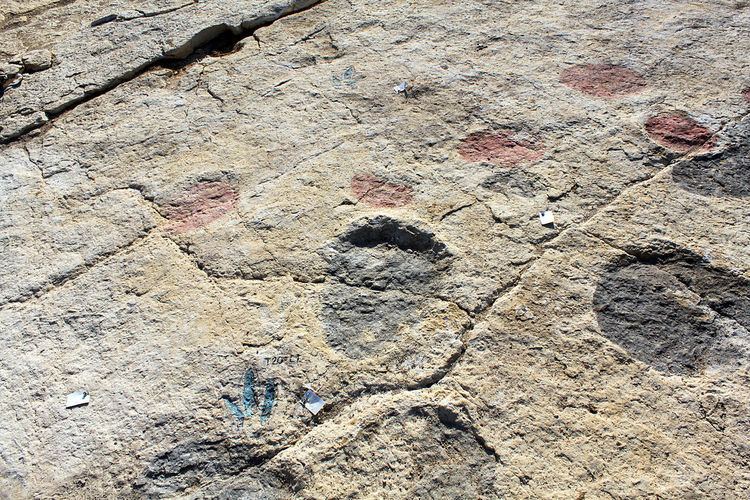Ichnoclass Reptilipedia Ichnogenus †Parabrontopodus | Ichnoorder †Sauropodina | |
 | ||
Parabrontopodus is an ichnogenus of dinosaur footprint, that was initially appointed by Lockley et al. in 1994, and was assigned to Sauropoda by Lockley in 2002 and in 2004 by Niedzwiedzki and Pienkowski. Various species through their footprints that are characterized by the association of two impressions left by hand and foot. The acquisition of a specific family is complex, but now in most cases, they have been considered diplodocoids and similar animals. The reason is that their traces left are large, but in proportion to the size, from animals, seem very light because the depth of imprint is low.
Contents
Farlow, in 1992, had given a criterion for classifying sauropod tracks. Traces are distinguished wide as Brontopodus (Farlow et al., 1989) and the narrow track related to Breviparopus (Dutuit et al., 1980 cf. Farlow, 1992). As the Parabrontopodus track ratio is 1:5, it is considered narrow by Lockley.
Species recognizedEdit
Discoveries concerning ParabrontopodusEdit
These are probably ornithopods. The remains that were attributed to Parabrontopodus because they have similar tracks. The size is 45–50 cm.
In a path, five brands were found in the other layers of rock in the area, there are also isolated prints, which are poorly conserved.
There are 17 tracks of Parabrontopodus discovered in 2002. They are covered at least six layers, with a total thickness of one meter. In the summer of 2005, a smaller fossil was found, spread about 2 meters (6 ft 6.7 in) on a trail. The individual traces have a length of 20 cm (0.7 ft) and a width of 13.5 cm (0.4 ft). The animal probably was still in the first year of life.
No further details available.
Small traces were named Parabrontopodus by Casamiquela frenkii and Fasola in 1968. This is one case that was considered a titanosaur because unlike them, their limbs were less apart, leaving a trail of footprints close together. The discovery was named before Iguanodonichnus frenkii.
